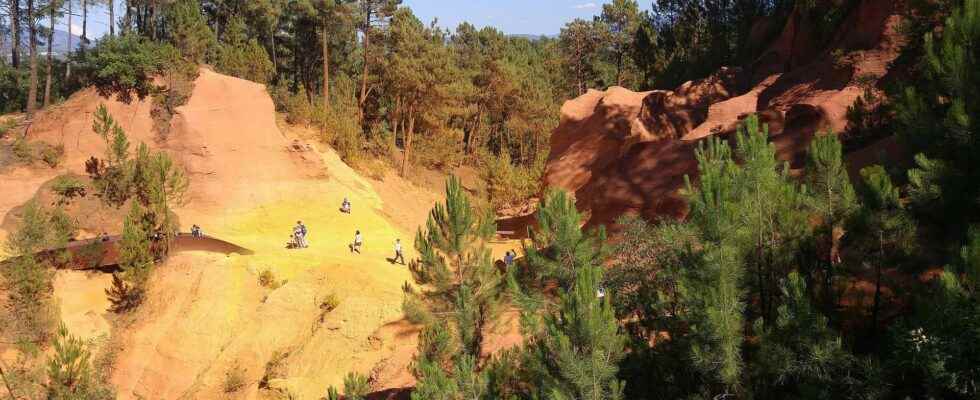You will also be interested
[EN VIDÉO] 5 incredible landscapes on Earth: to see absolutely! Discover five breathtaking spectacles offered by nature in China, the Maldives, the United States, Turkmenistan and Bolivia. Stroll from aquatic luminescence to the gates of hell. Good walk !
France is extremely rich in exceptional natural sites, which sometimes give the impression of being on another planet. In the heart of the Luberon, in the department of Vaucluse, is thus the most important deposit of ocher in France. Here the earth adorns itself with its most beautiful colors : from dark red to blinding yellow passing by a beautiful orange… One could believe oneself in a Martian canyon if there were not the presence of this typical vegetation of the Southern regions.
Departing from the village of Roussillon, the Sentier des ocres is an opportunity to discover this spectacular site without difficulty with the family, to learn more about its history and in particular its exploitation, but also to understand the geological processes that are involved in it. originally.
An intensely exploited site
Because to give birth to this site, it will have taken time and very specific conditions. The “ochres”, these natural pigments highly prized before the invention of chemical dyes, are in fact claysmore specifically kaolinite, containing oxides and hydroxides of iron which will give it these variations of red tint so characteristic.
Used mainly to color paints and mortars, the ochres of Roussillon, and more generally of Provence because there are several similar sites, were intensely exploited from the end of the 18th century.e century until the middle of the XXe. Today, chemical dyes, cheaper to produce, have replaced these natural dyes and most sites are abandoned.
A story that begins more than 110 million years ago
The ochres found in Provence were formed around 110 to 95 million years ago, during the Albian and the Cenomanian. Before that time, Provence was completely under water. It is also during this long marine phase that the limestone at the origin of Mont Ventoux, the Luberon mountains, the Verdon canyon but also the creeks of Marseille and Cassis! 110 million years ago, the sea deepened and gray clays were to be deposited on the limestone, almost completely filling up this basin. It is in this marine environment that has become shallow that the sands but also green clays of the glauconite type. Note that the particularity of glauconite is to be rich in iron.
From the end of the Albian, about 100 million years ago, the southern region of Vaucluse began to emerge from the water. This gradual emergence, which will not be complete until several tens of millions of years later, is associated with the play of a large transforming fault which separates the European plate from the Iberian-Corso-Sade microplate, located further south. the movement of this great fault causes a global uplift of the region.
A tropical environment that leaches and weathers iron-rich soil
During this emergence, the sandy and clayey deposits come into contact with theair and undergo a strong chemical weathering. The south of France was indeed then subject to a humid intertropical climate whose torrential rains will wash and dissolve certain elements of the soil. This alteration thus deconstructs the glauconite to produce a new mineral clay, kaolinite. During this weathering process, the iron present in the glauconite is lost and begins to circulate between the grains of sand and clay. It is then oxidized, which will give it a red hue, which will color the entire clay-sandy deposit by attaching itself to the kaolinite.
A small detail for discerning observers: traces of the region’s marine past are still clearly visible today on the working faces of the ocher cliffs of Roussillon. It is indeed possible to see oblique stratifications which are nothing but ripples of sand seen in cross-section.
The visit of the ochres of Roussillon is therefore an opportunity to take a little trip back in time and discover the region’s past, while taking full eyes !
Do you want to access Futura without being interrupted by advertising?
Discover our online subscriptions and browse without ads! At this moment, the Mag Futura is offered for a 3-month subscription to the subscription “I participate in the life of Futura”!
What is Mag Futura?
- Our first paper journal of more than 200 pages to make science accessible to as many people as possible
- A dive into the heart of 4 scientific themes that will mark 2022, from the Earth to the Moon
*Mag Futura is sent after the third month of registration.
Interested in what you just read?

